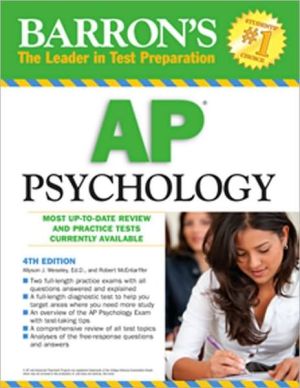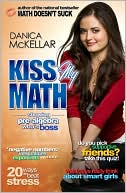Classroom Management for Middle and High School Teachers
Search in google:
This best-selling book helps teachers plan, implement, and develop the most basic classroom management tasks to build a smoothly running classroom that encourages learning. Written for the prospective or new middle and high school-level teacher, the text's content is ready to be applied in a classroom setting. The book addresses the planning decisions teachers must make, including arranging the physical space; creating a positive climate; establishing expectations, rules, and procedures; planning and conducting instruction; encouraging appropriate behavior; addressing problem behavior; and using good communication skills, with particular attention paid to the growth of diverse and inclusive classrooms.
PrefaceChapter 1: Organizing Your Classroom and MaterialsFive Keys to Good Room ArrangementSuggestions for Arranging Your ClassroomIf You Have to “Float”Further ReadingSuggested ActivitiesChecklist 1: Room PreparationChapter 2: Choosing Rules and ProceduresWhy Rules and Procedures Are NeededGeneral ProceduresProcedures During Seatwork and Teacher-Led InstructionProcedures For Student Group WorkMiscellaneous ProceduresFurther ReadingSuggested ActivitiesCase Study 2.1: Classroom Rules and Procedures in an Eighth-Grade ClassCase Study 2.2: Procedures for Small-Group Work/Laboratory ActivitiesChecklist 2: Rules and ProceduresChapter 3: Managing Student WorkYour Grading System and Record KeepingFeedback and Monitoring ProceduresCommunicating Assignments and Work RequirementsFurther ReadingSuggested ActivitiesCase Study 3.1: An Accountability System in an English ClassCase Study 3.2: Managing Student Work in a Math ClassCase Study 3.3: Managing Long-Term AssignmentsCase Study 3.4: Poor Work and Study Habits in MathematicsChecklist 3: Procedures for Managing Student WorkChapter 4: Getting Off to a Good StartPerspectives on the Beginning of the YearPlanning for a Good BeginningActivities on the First Day of ClassesThe Second Day of ClassesAfter the Second DayFurther ReadingSuggested ActivitiesCase Study 4.1: Beginning the Year in a First-Year Algebra Class Using Cooperative Learning GroupsCase Study 4.2: Beginning the Year in a High School Biology ClassCase Study 4.3: Conduct Problems in a History ClassChecklist 4: Preparation for the Beginning of SchoolChapter 5: Planning and Conducting InstructionPlanning Classroom ActivitiesOrganization ActivitiesKounin’s Concepts for Managing Group InstructionTransition ManagementInstructional ManagementFurther ReadingSuggested ActivitiesCase Study 5.1: Over and OverCase Study 5.2: Transition ProblemsCase Study 5.3: Problems with Small-Group and Discussion ActivitiesCase Study 5.4: Kounin ConceptsCase Study 5.5: A Science LEssonChecklist 5: Planning for InstructionChapter 6: Managing Cooperative Learning GroupsResearch on Cooperative LearningStrategies and Routines That Support Cooperative LearningMonitoring Student Work and BehaviorInterventions for GroupsEffective Group Work SkillsBeginning the Use of Cooperative Learning GroupsFurther ReadingSuggested ActivitiesChecklist 6: Planning for Cooperative Group InstructionChapter 7: Maintaining Appropriate Student BehaviorMonitoring Student BehaviorConsistencyPrompt Management of Inappropriate BehaviorBuilding a Positive ClimateImproving Class Climate through Incentives or RewardsFurther ReadingSuggested ActivitiesCase Study 7.1: Examples of Incentives and RewardsChapter 8: Communication Skills for TeachingConstructive AssertivenessEmpathetic RespondingProblem SolvingTalking with ParentsFurther ReadingSuggested ActivitiesAssertiveness Assessment ScalesCase Study 8.1: Three DialoguesChapter 9: Managing Problem BehaviorsWhat Is Problem BehaviorGoals for Managing Problem BehaviorManagement StrategiesSpecial ProblemsFurther ReadingSuggested ActivitiesChapter 10: Managing Special GroupsTeaching Heterogeneous ClassesTeaching Remedial ClassesStudents with Special NeedsFurther ReadingSuggested ActivitiesCase Study 10.1: Using Small Groups in EnglishCase Study 10.2: An Inclusion Program in Middle SchoolProblem SceneriosProblem 10.1: Heterogeneous ClassesProblem 10.2: Teaching a Remedial ClassProblem 10.3: Student Behavior in a Remedial ClassAppendix: Answer Keys for Chapter ActivitiesReferences and Further ReadingsIndex








